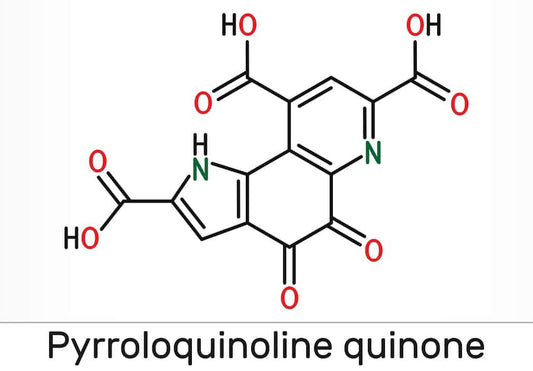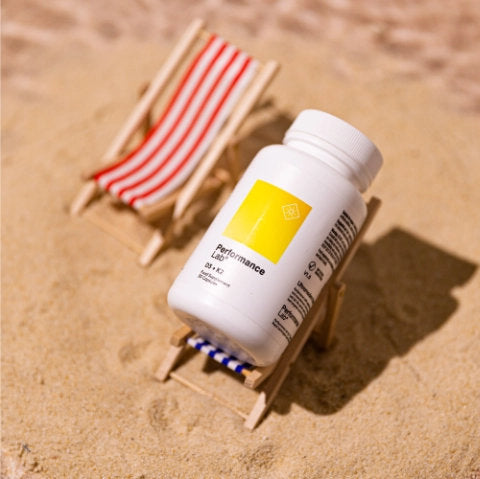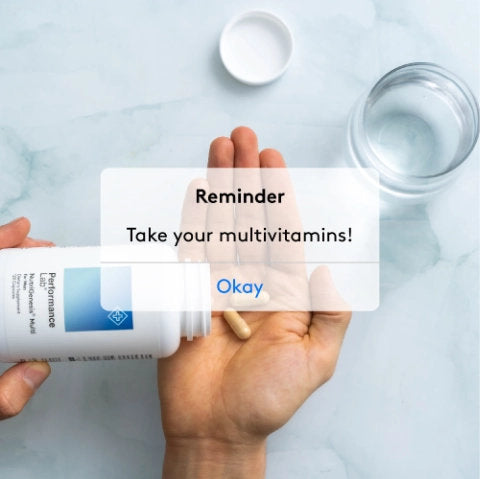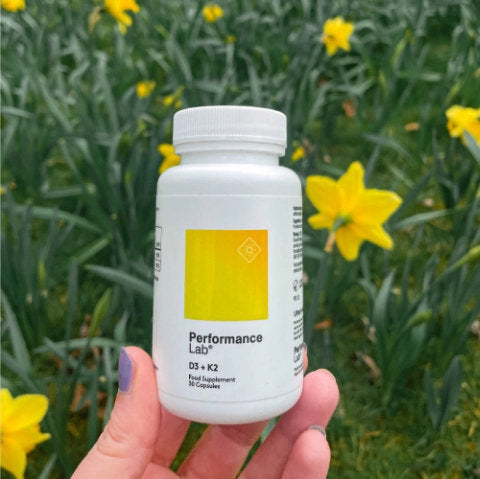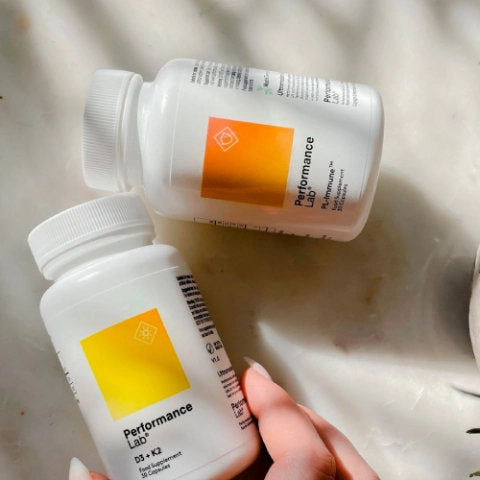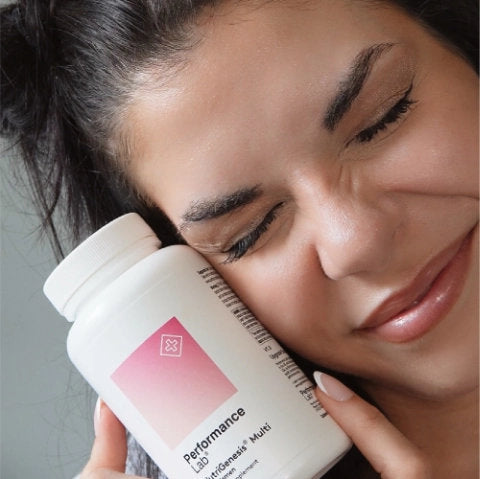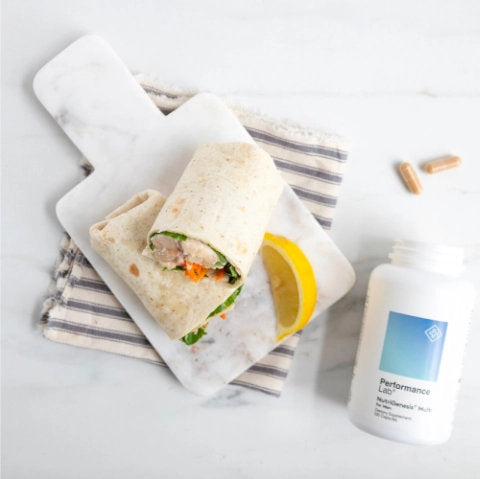Considering antioxidants to support healthy aging and whole-body wellness? R-Lipoic Acid and Alpha Lipoic Acid are two of the best. But are they the same thing? And if not, which one is better for health?
In this article, we'll be delving into R-Lipoic and Alpha Lipoic Acid supplementation, covering how they work and what benefits they may offer.
We compare Alpha Lipoic Acid vs R-Lipoic Acid, covering each one's distinct advantages. We'll also reveal which is best for antioxidant support and everything else. And conclude with a high-quality lipoic acid supplement to consider if you are ready to buy. Let's get to it!
Key Takeaways
- Alpha-lipoic acid (ALA) and R-Lipoic Acid (R-ALA) are closely related antioxidants that share benefits for blood sugar, anti-aging, brain health, energy production, heart health and more.
- R-lipoic acid (R-ALA) is the natural and biologically active form, while alpha-lipoic acid (ALA) includes both R and S (synthetic) forms.
- R-ALA is more potent and effective than ALA, particularly in terms of antioxidant activity and glucose metabolism support. It achieves its benefits more efficiently than ALA.
- R-ALA has higher bioavailability, meaning it is more readily absorbed and utilized by the body compared to antioxidant alpha lipoic acid (ALA).
- Alpha lipoic acid does have some advantages: it is more stable and cheaper to produce than R-ALA, making it a more affordable and accessible supplement.
Potential Benefits of R-Alpha Lipoic Acid (R-ALA) and Alpha-Lipoic Acid (ALA) Supplementation
- Antioxidant Support: Neutralizes free radicals, helps to protect healthy cells.
- Helps Insulin Sensitivity: May help to balance blood sugar levels.
- Supports Nerve Health: Especially issues related to blood sugar imbalance.
- Energy Production: Boosts mitochondrial function and energy metabolism.
- Weight Management: May assist in weight loss and reducing fat mass.
- Cardiovascular Health: Supports healthy endothelial (blood vessel lining) function.
- Skin Health: Protects against UV-induced skin damage and optimizes skin texture.
- Cognitive Function: Potentially enhances brain function and nourishes brain health.
- Liver Health: Supports liver metabolism and protects against toxin-induced damage.
- Detoxification: Binds to and helps remove heavy metals from the body (chelation).
ALA and R-Lipoic Acid Supplement Notes
- Supplements labeled as ALA usually contain a 50/50 mixture of R-ALA and S-ALA; while R-Lipoic Acid supplements specifically contain R-ALA only.
- Best Lipoic Acid form in supplements: Microencapsulated Bio-Enhanced® R-Lipoic Acid as Na-R-ALA. It offers superior stability, absorption, and prolonged release compared to standard forms. It reduces gastrointestinal discomfort and enhances efficacy, all with more convenient dosing.
- Best Supplement with R-Lipoic Acid to buy: Performance Lab Energy. It combines R-ALA with other nutrients to enhance energy production, reduce fatigue, fight age-accelerating free radicals and support overall vitality at a cellular level.
R-Lipoic Acid vs. Alpha Lipoic Acid
R-ALA (R-alpha-lipoic acid) and ALA (alpha-lipoic acid) are closely related but not identical. Here’s a breakdown of their relationship and differences:
Alpha-Lipoic Acid (ALA). ALA is a naturally occurring compound that acts as an antioxidant. It is present in every cell of the body and helps turn glucose into energy. ALA exists in two forms (isomers), R-ALA (R-α-lipoic acid) and S-ALA (S-α-lipoic acid). When you take a standard ALA supplement, it typically contains a 50/50 mixture of R-ALA and S-ALA.
R-Alpha-Lipoic Acid (R-ALA). R-ALA is the biologically active form of ALA. It is the form that is naturally synthesized in the body and is responsible for most of the beneficial effects of ALA. R-ALA is considered to be more potent and bioavailable compared to the S-ALA isomer.
To sum it up, R-ALA is a specific, naturally occurring form of alpha-lipoic acid (ALA) that is more bioavailable and potent compared to its counterpart, S-ALA.
While they share similar properties, R-ALA is considered more potent and effective due to its higher bioavailability and efficacy.
More on Alpha Lipoic Acid

Lipoic acid, usually referred to as alpha-lipoic acid or ALA, is an organosulfur compound derived from caprylic acid.
In humans, alpha-lipoic acid is naturally produced in the mitochondria but is also found in several food sources, which we'll get to in a moment.
Endogenously synthesized alpha-lipoic acid is protein-bound and serves as a cofactor for several critical mitochondrial functions for energy production and amino acid metabolism.(1)
There are two main forms of oral alpha lipoic acid that you’ll see: R- and S-enantiomers. These enantiomers are mirror images of each other, but only the R-form is synthesized by the body and bound to proteins but also found in food sources.
In supplements, you’ll generally find only R-lipoic acid or a 50/50 mix of S-lipoic acid and R-lipoic acid.
The therapeutic effect of supplemental lipoic acid is often attributed to its role as an antioxidant. And its reduced form -- Dihydrolipoic acid (DHLA) -- is even more effective.
DHLA is a powerful antioxidant that is produced in the body when alpha lipoic acid reduction occurs during various cellular processes. DHLA works alongside ALA to neutralize free radicals and protect cells from oxidative stress. Additionally, DHLA plays a role in energy production within the mitochondria, supporting metabolic functions and overall cellular health.
Both DHLA, the reduced form of lipoic acid, and lipoic acid itself possess metal-chelating capacity and scavenge ROS. But DHLA can also regenerate endogenous antioxidants ( vitamin E [alpha tocopherol], vitamin C [ascorbic acid] and glutathione) and repair oxidative damage.(2)
Did you know? ALA is a "universal antioxidant." Lipoic acid as an antioxidant is both water-soluble and fat-soluble—whereas most other antioxidants are either or—which makes it a versatile free radical scavenging agent that fights damage in virtually every cell and tissue in the body.(3)
More on R-Alpha Lipoic Acid (R-ALA)

R-alpha lipoic acid (R-ALA) is the naturally occurring, biologically active form of alpha lipoic acid.
Similar to Alpha Lipoic Acid, R-ALA is a potent antioxidant in its own right for fighting lipid peroxidation, protein oxidation, DNA oxidation and more. It also plays a crucial role in energy production within cells by participating in mitochondrial function. Like ALA, it protects the brain and nervous system and enhances the body's antioxidant defenses.
Unlike its synthetic counterpart, however, R-ALA is more efficiently absorbed and utilized by the body. As a result, many consider R-ALA to be an upgrade over standard ALA supplements.
Potential Benefits Of Lipoic Acid and R-Lipoic Acid
Alpha-lipoic acid (ALA) and R-lipoic acid (R-ALA) essentially offer the same health benefits because they share similar properties and mechanisms of action.
Both forms act as powerful antioxidants, reducing oxidative stress, improving mitochondrial function, and enhancing cellular energy production.
They support glucose metabolism, insulin sensitivity, and neuroprotection, while also aiding in detoxification and cardiovascular health.
The key difference lies in their composition and potency. ALA is a racemic mixture containing both R-ALA (the naturally occurring, biologically active form) and S-ALA (a synthetic form).
R-ALA, being the naturally occurring form, is more potent and better absorbed by the body compared to the S-ALA found in standard ALA supplements. This means that R-ALA can achieve the same effects as ALA but at lower doses.
Despite these apparent advantages, most of the research has been conducted on ALA because it is more widely available and has simply been around as a supplement for longer.
However, the benefits observed in ALA studies are largely attributed to the R-ALA component, which explains why both forms are recognized for their similar health benefits.
Therefore, while ALA is the more researched form, R-ALA offers the same advantages, often with enhanced efficacy due to its superior bioavailability and potency.
Let's take a look at some of the potential benefits of both ALA and R-ALA and what types of supplements may deliver these benefits.
While we will be talking about the research-backed benefits of ALA, keep in mind that they will also apply to R-ALA.
Antioxidant Support

Due to their antioxidant activity, Alpha-lipoic acid (ALA) and R-Lipoic Acid can both help manage health issues related to oxidative stress.
Oxidative stress is when there are too many harmful molecules called free radicals in the body, and not enough antioxidants to neutralize them. This imbalance can damage cells, proteins and DNA, leading to various health issues.
One area for which ALA's antioxidant activity may be especially helpful is fighting blood sugar imbalance-related nerve health concerns.
As both a water- and fat-soluble antioxidant, ALA and R-ALA can reach and protect all parts of cells against the damaging, age-accelerating stress of free radicals.(4)
This puts these antioxidants a few steps ahead of most other endogenous and exogenous antioxidants that are only water-soluble (like vitamin C) or only fat-soluble (like vitamin E).
Versatile and powerful antioxidants alpha lipoic acid and R-ALA are involved in more:
Scavenging RONS: Reactive oxygen and nitrogen species are highly reactive compounds that can damage DNA, proteins, and lipids in cell membranes. ALA and R-ALA are a direct radical scavenger duo that neutralizes radical molecules and protects cells from damage. Dietary supplementation with them has been shown to enhance protective effects, helping to manage oxidative stress and modulate inflammation.
Antioxidant regeneration: When antioxidants scavenge free radical molecules, in the process of neutralization they become oxidized and cannot scavenge additional radicals until they have been reduced. Lipoic acid and R-ALA, however, are powerful reducing agents that can regenerate several key antioxidants, including CoQ10, vitamin C, vitamin E, and glutathione.(5-7)
Metal chelation: Heavy metal toxicity can have major impacts on neurological function. Metals like iron and copper may induce oxidative damage by acting as catalysts for reactions that generate free radicals. Both lipoic acid and DHLA have been shown to prevent copper and iron-mediated oxidative damage, which may be beneficial for neurodegenerative issues where oxidative stress is an underlying component.(8,9)
Activates signaling pathways: Glutathione (GSH) is one of the most powerful endogenous antioxidants in the human body that also plays a role in the detoxification and elimination of toxins. Decreases in glutathione synthesis and tissue concentrations can reduce the body’s ability to deal with oxidative stress, but research shows that lipoic acid may enhance the synthesis of GSH via upregulating expression of γ-glutamylcysteine ligase (γ-GCL), the rate-limiting enzyme involved in its production, but also by increasing cellular uptake of cysteine, a precursor amino acid required for GSH synthesis.
Metabolic Health, including Blood Sugar
Alpha-lipoic acid (ALA) and R-lipoic acid (R-ALA) are essential in metabolic health supplements due to their significant role in improving glucose metabolism and insulin signaling pathway performance.
These compounds activate an enzyme called AMP-activated protein kinase (AMPK), which enhances glucose uptake into cells and increases energy production.
This mechanism is particularly beneficial for individuals with diabetes or metabolic syndrome, as it helps regulate blood sugar levels and may help with insulin resistance.(10)
Additionally, ALA and R-ALA regulate oxidative stress and inflammation, which are common in metabolic disorders.
By supporting mitochondrial function, they ensure that cells efficiently convert nutrients into energy, promoting overall metabolic health.
ALA and R-ALA are promising nutrients for supporting metabolic health and helping with blood sugar challenges, including those related to diabetic neuropathy.(11)
Research shows that one important action of lipoic acid for blood glucose is the expression of AMPK in the hypothalamus and peripheral tissues. AMPK activation inhibits certain energy-consuming biosynthetic pathways and the activation of ATP-producing catabolic pathways.
Additionally, AMPK also influences the transcription of specific genes involved in energy metabolism, thus exerting long-term metabolic control.
A 2011 study looked at the effects of alpha-lipoic acid supplementation over two months on fasting blood glucose (FBG), insulin resistance (IR), and glutathione peroxidase (GH-Px) activity in type 2 diabetics. Results showed that 300mg daily of ALA was beneficial for reducing FBG and post-prandial plasma glucose (PPG) levels, along with insulin resistance and GH-Px activity, suggesting that it may be a beneficial supplement for people dealing with metabolic dysregulation.(12)
Immune and Inflammation Balance
Research suggests that ALA supplementation may influence certain markers of inflammation such as C-reactive protein (CRP).(13) Its inflammation-regulating potential has been linked to its support for blood sugar balance and healthy immune system responses.
Weight Loss Help

Along with regulating glucose uptake, ALA’s ability to reduce AMPK activity may benefit weight loss; AMPK functions as a fuel sensor in cells and is activated when cellular energy is depleted.(14)
ALA is a cofactor of mitochondrial enzymes that can suppress the activity of AMPK, which may result in weight loss by reducing food intake and appetite and enhancing energy expenditure. However, the extent to which ALA can support weight loss is still debatable.
Anti-Aging
Alpha-lipoic acid (ALA) and R-lipoic acid (R-ALA) are widely used in anti-aging supplements due to their powerful antioxidant properties. These compounds help neutralize free radicals, which are harmful molecules that cause oxidative stress and contribute to the aging process.
In theory, R-Lipoic and alpha lipoic acid reverses the age-accelerating effects of toxic free radicals.
By reducing oxidative damage, ALA and R-ALA protect cells, proteins, and DNA, potentially slowing down the cellular signs of aging. They also enhance the body’s antioxidant defense system by regenerating other antioxidants such as vitamin C and glutathione.
Additionally, both ALA and R-ALA improve mitochondrial function, which boosts cellular energy production and helps maintain youthful vitality.
Their ability to support skin health, reduce wrinkles, and improve overall vitality makes them valuable ingredients in many anti-aging formulations.
In addition, ALA and R-ALA levels have been shown to decline in the human body as part of the natural aging process. Researchers believe that maintaining healthy levels may help with age-related health concerns, especially those related to brain health and metabolic function.(15)
Heart Health

Alpha-lipoic acid (ALA) and R-lipoic acid (R-ALA) are key ingredients in heart health supplements due to their ability to support cardiovascular function, including protecting the structure of the heart and blood vessels.(16)
These compounds act as potent antioxidants, reducing oxidative stress and inflammation in the cardiovascular system, which are major contributors to heart problems.
By protecting the endothelial cells lining blood vessels, ALA and R-ALA help maintain healthy blood flow and prevent atherosclerosis, a condition characterized by plaque buildup in the arteries. They may help to balance lipid profiles.
Additionally, ALA and R-ALA enhance mitochondrial function, ensuring that heart cells have sufficient energy to function optimally. This wide-reaching support for cardiovascular health makes them helpful components in supplements aimed at promoting heart health.
Did you know? Taking the medication irbesartan and/or lipoic acid helps people with metabolic syndrome by improving blood vessel function and lowering inflammation, which are key factors in the development of atherosclerosis.(17)
Nootropic (Brain Health)

Alpha-lipoic acid (ALA) and R-lipoic acid (R-ALA) are prominent components in supporting brain health. They are sometimes included in the best nootropic supplements due to their neuroprotective and cognitive-enhancing properties.
As potent antioxidants, they reduce oxidative stress and inflammation in the brain, which are linked to neurodegenerative issues. ALA and R-ALA also chelate metal ions, preventing metal-induced oxidative damage that can impair cognitive function.
These compounds improve mitochondrial function, ensuring that brain cells have adequate energy to support cognitive processes. Additionally, ALA and R-ALA enhance the production of acetylcholine, a neurotransmitter essential for learning and memory.
By protecting neurons, reducing oxidative damage, and supporting overall brain energy metabolism, ALA and R-ALA contribute to improved cognitive function, sharper memory, and better mental clarity, making them valuable ingredients in nootropic and brain health supplements.(18)
Detoxification Support
Alpha-lipoic acid (ALA) and R-lipoic acid (R-ALA) play a crucial role in detoxification supplements due to their ability to support the body’s natural detox processes. These compounds act as potent antioxidants, reducing oxidative stress and protecting cells from damage caused by toxins.
ALA and R-ALA are suggested to chelate, or bind to, heavy metals like mercury, lead, and cadmium, facilitating their removal from the body.(19)
This chelating action helps prevent the accumulation of harmful metals that can impair organ function and overall health. Additionally, ALA and R-ALA support liver function, enhancing the liver’s ability to process and eliminate toxins.
By promoting the excretion of these harmful substances and reducing oxidative damage, ALA and R-ALA serve as a therapeutic metal chelating antioxidant. In turn, they optimize the body’s detoxification pathways and may contribute to the effects of detox supplements.
Energy Production
Alpha-lipoic acid (ALA) and R-lipoic acid (R-ALA) are key ingredients in the best energy supplements due to their vital role in enhancing cellular energy production.
These compounds are integral to mitochondrial function, where they act as cofactors for enzymes involved in the production of adenosine triphosphate (ATP), the primary energy currency of cells.
By supporting the efficiency of mitochondrial energy production, ALA and R-ALA help increase overall energy levels, reduce fatigue, and improve physical performance.
Additionally, their antioxidant properties protect mitochondria from oxidative damage, ensuring that energy production remains efficient and uninterrupted.
This dual role of boosting energy production and protecting cellular powerhouses makes ALA and R-ALA essential in supplements designed to enhance energy, vitality, and endurance.
What is DL-Alpha Lipoic Acid? DL-alpha lipoic acid, often referred to simply as alpha lipoic acid (ALA), is a mixture of two forms of lipoic acid: the natural R-alpha lipoic acid (R-ALA) and the synthetic S-alpha lipoic acid (S-ALA).This 50/50 racemic mixture combines the biologically active R-ALA, which is naturally found in the body and in some foods, with the synthetic S-ALA, which does not naturally occur in nature and is less effective. While both forms have antioxidant properties and can support cellular energy production, the R-ALA is more potent and better utilized by the body compared to the S-ALA.
ALA and R-ALA Foods
Looking to increase your ALA antioxidant status by consuming the right foods? It's a good idea but can be a challenging task.
Most people do not get significant amounts of alpha lipoic acid from food alone.
It's not hard to get, but it is only present in relatively small quantities in foods.
*Note: Alpha-lipoic acid (ALA) found in foods is naturally in the form of R-lipoic acid (R-ALA), which is the biologically active form. When we refer to the ALA content in foods, we are primarily talking about R-ALA because it is the form present in nature.
Foods that Supply Alpha Lipoic Acid (ALA) and Typical Amounts (approximate) per Serving:
- Spinach (1 cup cooked) - 3 mg of ALA
- Broccoli (1 cup cooked) - 1 mg
- Brussels sprouts (1 cup cooked) - 0.9 mg
- Tomatoes (1 medium tomato) - 0.6 mg
- Peas (1 cup cooked) - 0.5 mg
- Potatoes (1 medium potato, baked) - 0.4 mg
- Organ meats (3 ounces cooked, e.g., liver, heart, kidney) - 1 to 2 mg
- Red meat (3 ounces cooked) - 1 to 2 mg
- Brewer's yeast (1 tablespoon) - 0.4 mg
- Beets (1 cup cooked) - 0.3 mg
- Carrots (1 cup cooked) - 0.2 mg
- Yams (1 cup cooked) - 0.2 mg
While a balanced diet that includes vegetables, meats, and organ meats will provide some ALA (as the active form, R-ALA), the amounts are generally low.
- If you ate a serving of each food on the ALA food list above, you would consume about 10 to 12 mg of alpha lipoic acid.
- A good supplement, on the other hand, will supply anywhere from 100 to 600 mg of alpha lipoic acid or R-ALA per serving.
In other words, if you're looking to achieve the potential health benefits associated with higher ALA and R-ALA intake, such as improved antioxidant protection or enhanced glucose metabolism, taking alpha lipoic acid supplements (or R-ALA) is often recommended. Let's check out that path.
Lipoic Acid Supplements
Lipoic acid dietary supplements are widely available on the market, as a standalone product or combine with other antioxidants (or other nutrients) into stack supplements.
ALA and R-ALA supplements make it far easier to hit therapeutic dosages of these nutrients.
They are most often presented in capsules and tablets. Powder supplements are also available, which enable flexible dosing and can be added to water, juice, smoothies or shakes. Softgels are yet another delivery method.
So what's the difference between ALA and R-Lipoic acid supplement products
- Most lipoic acid supplements (ALA) are a 50/50 mix of R-lipoic acid and S-lipoic acid.
- Most R-lipoic acid supplements supply 100% R-ALA, with no synthetic S-lipoic acid included.
Most experts seem to agree that R-lipoic is simply easier for the body to absorb and utilize; therefore it may be more comfortable to take and may achieve benefits more efficiently than its ALA counterpart.
Considering r-lipoic acid vs alpha lipoic acid? The basic rule to remember: ALA is more affordable and R-ALA is more effective.
*It's important to consult with a healthcare professional before starting R-ALA or ALA supplementation, especially for individuals with existing health conditions or those taking other medications.
How Are Alpha Lipoic Acid and R-Lipoic Acid Similar?
Let's take a look at how the dosages and supplement categories for alpha-lipoic acid (ALA) and R-lipoic acid (R-ALA) are similar, but with some distinctions due to differences in potency and bioavailability.
Dosage Comparison:
Alpha-Lipoic Acid (ALA) and R-Lipoic Acid (R-ALA) fall is the same dosage ranges. However, it is believed that R-ALA -- due to its superior bioavailability -- may achieve the same benefits as ALA but at a smaller dosage. General dosage guidelines to consider:
ALA Typical Dose: Common doses for ALA supplements range from 300 mg to 600 mg per day.
R-Lipoic Acid Typical Dose: Due to its higher potency, the typical dose of R-ALA is usually lower than that of the racemic ALA mixture. Common doses range from 100 mg to 300 mg per day.
These doses can vary based on specific health conditions and recommendations, with some protocols recommending slightly higher dosages for blood sugar and metabolic support.
There also exists high-dose alpha lipoic acid treatment (up to 1200 mg daily) that must be administered by a doctor. This approach is sometimes used to help diabetic patients, including for issues like diabetic peripheral neuropathy.
Distinct Advantages of ALA over R-Lipoic Acid
- Cost-Effectiveness: Taking an alpha lipoic acid dietary supplement tends to be less expensive than pure R-ALA supplements. This makes ALA a more affordable option for those seeking the benefits of lipoic acid.
- Stability: The S-ALA component in ALA supplements can help stabilize the R-ALA, making the overall supplement more stable and less prone to degradation. This stability can result in a longer shelf life for ALA supplements compared to pure R-ALA
- Availability: ALA supplements are more widely available and come in a variety of forms and dosages, making them easier to find and use according to individual preferences and needs.
- Research Backing: Although R-ALA is more potent, much of the research on the health benefits of lipoic acid has been conducted on the racemic mixture (ALA), so the combination of R-ALA and S-ALA has a well-documented history of efficacy and safety.
- Complementary Effects: Some studies suggest that the presence of both R-ALA and S-ALA might provide complementary effects that could offer certain benefits not seen with R-ALA alone. However, this is still an area of ongoing research.
Distinct Advantages of R-Lipoic Acid over ALA:
- Potency: R-ALA is the naturally occurring, biologically active form, making it more potent and effective than the synthetic S-ALA found in ALA supplements.
- Bioavailability: R-ALA has higher bioavailability, meaning it is more readily absorbed and utilized by the body compared to ALA.
- Efficacy: Due to its enhanced potency and bioavailability, R-ALA may provide quicker and more pronounced benefits than ALA.
R-Lipoic Acid vs. Alpha Lipoic Acid: Which is a better antioxidant?
R-lipoic acid is the better antioxidant due to its higher potency and bioavailability compared to alpha-lipoic acid, which is a mix of R-ALA and the less effective S-ALA. R-ALA is more efficiently absorbed and utilized by the body.
While both R-ALA and ALA offer similar health benefits, R-ALA is often considered a better antioxidant and more effective supplement overall due to its natural form and better absorption by the body.
Best Form of Lipoic Acid in Supplements: Microencapsulated Bio-Enhanced®
While both forms of lipoic acid offer health benefits, when it comes to dietary supplements, we gravitate towards bioenhanced R-lipoic acid like what’s found in Performance Lab® Energy.
Bio-Enhanced® R-Lipoic Acid is a specialized form that's been converted the biologically active "R" form of Lipoic Acid to Sodium R-Lipoic Acid (Na-R-ALA), which can achieve 10-30 times higher peak blood levels than pure, unstabilized R-Lipoic Acid (RLA). Advantages:
Enhanced Stability: Standard R-lipoic acid can be unstable and prone to degradation, reducing its effectiveness. Microencapsulation protects R-lipoic acid from environmental factors such as heat, light, and moisture, preserving its potency over time.
Improved Absorption: The microencapsulation process increases the bioavailability of R-lipoic acid. This means a higher percentage of the compound is absorbed into the bloodstream, making it more effective at lower doses compared to non-encapsulated forms.
Prolonged Release: Microencapsulated R-lipoic acid can be formulated for sustained release, providing a steady supply of the active ingredient over time. This helps maintain consistent therapeutic levels in the body, enhancing its overall benefits.
Reduced Gastrointestinal Discomfort: Encapsulation can minimize potential gastrointestinal side effects that some individuals experience with standard R-lipoic acid supplements. The protective coating helps prevent irritation to the stomach lining.
Improved Efficacy: By improving stability and absorption, microencapsulated R-lipoic acid can be more effective in delivering its health benefits, including potent antioxidant activity, improved glucose metabolism, and enhanced neuroprotection.
Convenient Dosing: Higher bioavailability means that smaller doses of microencapsulated R-lipoic acid can achieve the same or greater effects compared to larger doses of non-encapsulated forms, making it more convenient for users.
Microencapsulated Bio-Enhanced® R-Lipoic Acid offers distinct advantages over other "regular" forms of R-lipoic acid.
And as for Na-R-ALA vs. Alpha Lipoic Acid? No contest. Bio-Enhanced Na-R-ALA is a superior choice for those seeking the maximum therapeutic benefits of R-lipoic acid in a convenient and effective supplement form.
We're covering the best energy supplement with Microencapsulated Bio-Enhanced® R-Lipoic Acid up next.
Best R-Lipoic Acid Supplement: Performance Lab® Energy

Next-gen formula for caffeine-free, jitter-free energy. Produces a clean cognitive lift with no crash.
Ingredients: CoQ10 (Coenzyme Q10), PQQ (Pyrroloquinoline Quinone), Acetyl-L-Carnitine (ALCAR), Black Pepper Extract (95% piperine), R-Lipoic Acid, 100 mg.
Performance Lab® Energy enhances energy production at the cellular level, particularly targeting organs and tissues with high energy demands such as the brain and muscles.
Energy primarily works by supporting cells' powerhouse mitochondria. It's an ideal formula for powering-up mental function, exercise performance, and overall daily vitality without any caffeine or stim-related side effects.
Performance Lab® Energy benefits:
- Revolutionary jitter-free energy: a clean cognitive lift with no crash
- Stim-free mitochondria booster raises vitality at a cellular level
- Safe, natural and legal way to revitalize mind-body performance
- Boosts exercise performance by charging-up brain and muscles
- Maintains robust cell energy linked to long-range brain health
The most sophisticated stim-free energy booster ever developed, Performance Lab® Energy is a must-have supplement for supercharging performance while keeping your brain healthy.
Conclusion
In a world that constantly throws free radicals our way, getting enough antioxidants—both through diet and supplementation—is key for maintaining optimal function throughout a lifestyle.
If you’ve already got vitamin C, vitamin E, and GSH in your supplement stack, it only makes sense that you add in the helping hand, lipoic acid. But what's best for your health: R alpha lipoic acid vs alpha lipoic acid?
While both R-lipoic acid (R-ALA) and alpha-lipoic acid (ALA) offer substantial antioxidant benefits, R-ALA proves to be the superior supplement.
R-ALA’s naturally occurring, biologically active form ensures higher potency and better bioavailability, allowing it to be absorbed and utilized more efficiently by the body.
Additionally, R-ALA's enhanced stability compared to standard ALA means it retains its effectiveness longer and provides more consistent benefits.
For those seeking the most reliable antioxidant support to combat oxidative stress, improve glucose metabolism, and protect overall health, R-ALA is the clear choice. Its ability to deliver potent, long-lasting effects makes it a standout option in the realm of antioxidant supplements.
Now that you know R-lipoic acid is more effective than ALA, it’s important to take it under your doctor's supervision.
R-lipoic acid's higher potency and better absorption can offer significant health benefits, but these same qualities also mean that it can interact more strongly with medications and medical conditions. A healthcare professional can help determine the appropriate dosage and monitor for any potential side effects or interactions, ensuring you get the maximum benefit safely.
- L Packer, E. Lipoic acid: energy metabolism and redox regulation of transcription and cell signaling. J Clin Biochem Nutr. 2011;48(1):26-32.
- GP Biewenga, GR Haenen, A Bast. The pharmacology of the antioxidant lipoic acid. Gen Pharmacol. 1997;29(3):315-331.
- S Golbidi, M Badran, I Laher. Diabetes and alpha lipoic Acid. Front Pharmacol. 2011;2:69.
- Nguyen H, Pellegrini MV, Gupta V. Alpha-Lipoic Acid. [Updated 2024 Jan 26]. In: StatPearls [Internet]. Treasure Island (FL): StatPearls Publishing; 2024 Jan-. Available from: https://www.ncbi.nlm.nih.gov/books/NBK564301/
- W Jones, X Li, ZC Qu, L Perriott, RR Whitesell, JM May. Uptake, recycling, and antioxidant actions of alpha-lipoic acid in endothelial cells. Free Radic Biol Med. 2002;33(1):83-93.
- Kozlov AV, Gille L, Staniek K, Nohl H. Dihydrolipoic acid maintains ubiquinone in the antioxidant active form by two-electron reduction of ubiquinone and one-electron reduction of ubisemiquinone. Arch Biochem Biophys. 1999;363(1):148-154.
- May JM, Qu ZC, Mendiratta S. Protection and recycling of alpha-tocopherol in human erythrocytes by intracellular ascorbic acid. Arch Biochem Biophys. 1998;349(2):281-289.
- P Ou, HJ Tritschler, SP Thioctic (lipoic) acid: a therapeutic metal-chelating antioxidant? Biochem Pharmacol. 1995;50(1):123-126.
- JH Suh, BZ Zhu, E deSzoeke, B Frei, TM Hagen. Dihydrolipoic acid lowers the redox activity of transition metal ions but does not remove them from the active site of enzymes. Redox Rep. 2004;9(1):57-61.
- Capece U, Moffa S, Improta I, Di Giuseppe G, Nista EC, Cefalo CMA, Cinti F, Pontecorvi A, Gasbarrini A, Giaccari A, Mezza T. Alpha-Lipoic Acid and Glucose Metabolism: A Comprehensive Update on Biochemical and Therapeutic Features. Nutrients. 2022 Dec 21;15(1):18. doi: 10.3390/nu15010018. PMID: 36615676; PMCID: PMC9824456.
- S Golbidi, M Badran, I Laher. Diabetes and alpha lipoic Acid.Front Pharmacol. 2011;2:69.
- H Ansar, Z Mazloom, F Kazemi, M Hejazi. Effect of alpha-lipoic acid on blood glucose, insulin resistance and glutathione peroxidase of type 2 diabetic patients. Saudi Med J. 2011;32(6):584-588.
- Đukić L, Trajković L, Knežević T, Dimitrijević J, Krstić D, Stojanović M. The Effect of α-lipoic Acid on C-Reactive Protein Level: A Meta-analysis of Randomized, Double-Blind, and Placebo-Controlled Studies. Dose Response. 2022 Oct 13;20(4):15593258221126827. doi: 10.1177/15593258221126827. PMID: 36262716; PMCID: PMC9575455.
- MS Kim, JY Park, C Namkoong, et al. Anti-obesity effects of alpha-lipoic acid mediated by suppression of hypothalamic AMP-activated protein kinase. Nat Med. 2004;10(7):727-733.
- Shanaida M, Lysiuk R, Mykhailenko O, Hudz N, Abdulsalam A, Gontova T, Oleshchuk O, Ivankiv Y, Shanaida V, Lytkin D, Bjørklund G. Alpha-lipoic Acid: An Antioxidant with Anti-Aging Properties for Disease Therapy. Curr Med Chem. 2024 Apr 19. doi: 10.2174/0109298673300496240416114827. Epub ahead of print. PMID: 38644711.
- Wollin SD, Jones PJ. Alpha-lipoic acid and cardiovascular disease. J Nutr. 2003 Nov;133(11):3327-30. doi: 10.1093/jn/133.11.3327. PMID: 14608040.
- Sola S, Mir MQ, Cheema FA, Khan-Merchant N, Menon RG, Parthasarathy S, Khan BV. Irbesartan and lipoic acid improve endothelial function and reduce markers of inflammation in the metabolic syndrome: results of the Irbesartan and Lipoic Acid in Endothelial Dysfunction (ISLAND) study. Circulation. 2005 Jan 25;111(3):343-8. doi: 10.1161/01.CIR.0000153272.48711.B9. Epub 2005 Jan 17. PMID: 15655130.
- Molz P, Schröder N. Potential Therapeutic Effects of Lipoic Acid on Memory Deficits Related to Aging and Neurodegeneration. Front Pharmacol. 2017 Dec 12;8:849.
- Sears ME. Chelation: harnessing and enhancing heavy metal detoxification--a review. ScientificWorldJournal. 2013 Apr 18;2013:219840. doi: 10.1155/2013/219840. PMID: 23690738; PMCID: PMC3654245..04r5


